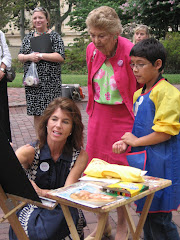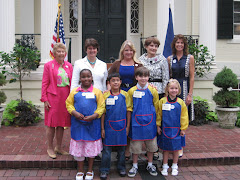Hello Everyone,
Believe it or not this is my first time ever writing a blog. I have many friends who do this on a regular basis (hello Charles! I just know that you’re going to find this no matter what so I thought I give you a HELLO. Btw, everyone, go and check out Charles Nobel’s blog. He is the Associate Principal Viola player of the Oregon Symphony and he writes about fascinating stuff almost every day and comments on every classical music related news. You can find his blog at http://www.nobleviola.com/wordpress/ )
Why don’t I blog myself? I think for most conductors it’s a lack of time rather than lack of inspiration which is exactly the case with me. I am happy if I get to update my website in a timely fashion. Apropos of my website; I put some new scores and photos there and you can read about my crazy busy schedule for this and the next season if you’re interested. Go to http://www.vajdag.com and check it out!
I’ve been to Baltimore twice and did the obligatory 24 hour tourist visit to Washington, DC, but this is my first time in Fairfax City and Fairfax County. Taking part in the Music Director Search of the FSO is a great opportunity to learn more about this region. It’s fascinating how Fairfax is growing and how it has changed (I was trying to catch up on its history, too). I believe that there are many opportunities for this organization to grow and to become #1 as the region’s largest musical organization. I hope I can be part of this exciting trip as the next MD!
I am glad that ticket sales are going well! I am sure that the buzz about the search helps it but I believe that the programming is a major part of it as well. After putting the concert program together for this Saturday (more than a year ago), I realized that the actual date is March 14. “By accident” it is just the day before the Hungarian “Independence Day” (March 15 marks the outbreak of the Hungarian revolution against the Habsburgs in 1848 and the birth of the First Hungarian Republic). I swear I was not thinking about this when making the entire first half of the program Hungarian! :) We’ll open with the popular tone-poem of Franz Liszt (who was born and lived as a Hungarian without actually speaking the language, which was common in the 19th Century) called Les Preludes. Then Andrew Armstrong, an amazing, young American talent will join us to perform Bela Bartok’s Piano Concerto #3, his last completed composition ever. The second half will bring you one of the greatest German romantic symphonies, #2 by Robert Schumann.
Yes, this program does look like the “same old” overture-concerto-symphony set up. There are some interesting twists however. First, all three composers were piano players. Pianists are always having a ball with the Bartok because it has everything you need for a perfect concert piece. The first movement is unmistakably Hungarian in style with some fine chamber music mostly between the woodwinds, horns and the piano. The second movement is like a very personal confession, rather a prayer interrupted by happy bird songs. Apparently Bartok has incorporated actual bird songs he heard in the backyard (while staying at a friend’s house in upstate New York) into the piece while writing it. The third movement is a real virtuosic finale with a breath-taking fugue section in the middle. In Les Preludes, probably the most well-known composition of Liszt (after his piano concertos, of course) you’ll hear some original “piano writing” transformed for orchestra. The same thing happens with the Schumann. Just ask the second violin or the viola section if they feel like playing the perfect idioms of their instruments. The answer probably will be: not at all. You know, it is not easy to recreate on a string instrument what the left hand of Liszt or Schumann could do on the piano! FSO musicians are doing a great job with this as well and they seem to be really excited to play the Bartok which some of them have never played before.
To me Liszt’s so called “Hungarian style” (which is really the way that Gypsies played in the 19th Century) connects Bartok’s unique, folkloristic language to the romantic music of Robert Schumann. This is one very important thing that connects these three masterpieces, but there is more. It is a real fun fact. Again, just after creating this program, I finally remembered what else was linking them together. Les Preludes was used in Germany, Austria and Hungary as the theme music for news casts in the first half of the 20th Century when – way before TV existed – they showed the news before the feature film in movie theaters. The opening of Bartok’s Third Piano Concerto still is the signal of Hungarian Radio Channel #3 that is named after Bartok. For about twenty years, in the hero-times of Hungarian Television the Scherzo movement of Symphony #2 by Schumann was the music for the news program. (We only had Hungarian TV 1 and TV 2 for a long time and I remember from when I was a kid that Monday was a day off with no broadcast whatsoever. But hey, they played Schumann! :) )
I just realized how much I wrote… Blogging does not seem to be that difficult after all! Please, come to the concert this Saturday! You don’t want to miss Andrew Armstrong, the FSO and the music of Liszt, Bartok and Schumann! I am looking forward to seeing you all at the pre-concert talk and in your seats!
Best,
Gregory Vajda
.jpg)
.jpg)
.jpg)
1 comments:
Goodness, we'll miss you. They'd certainly be foolish not to take you. We always enjoy when you're conducting and your pre-concert talks are informative.
Post a Comment